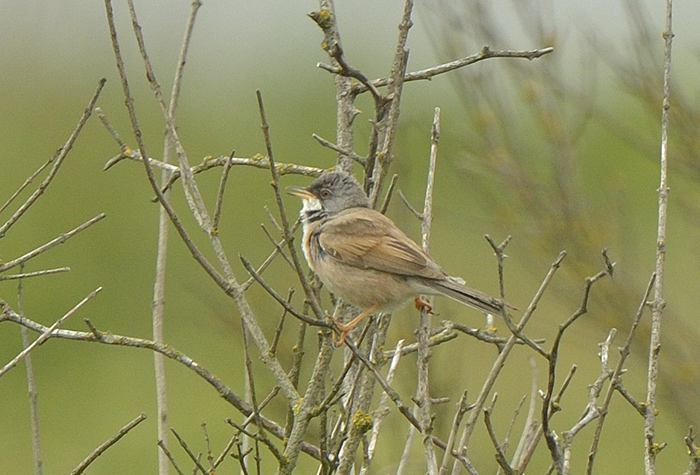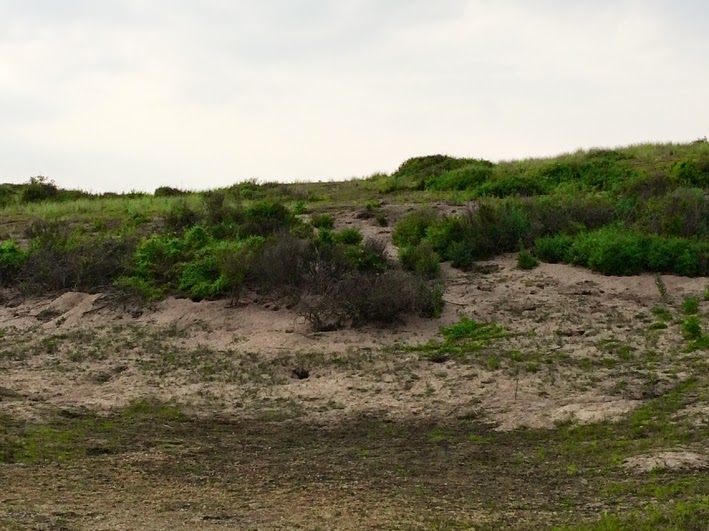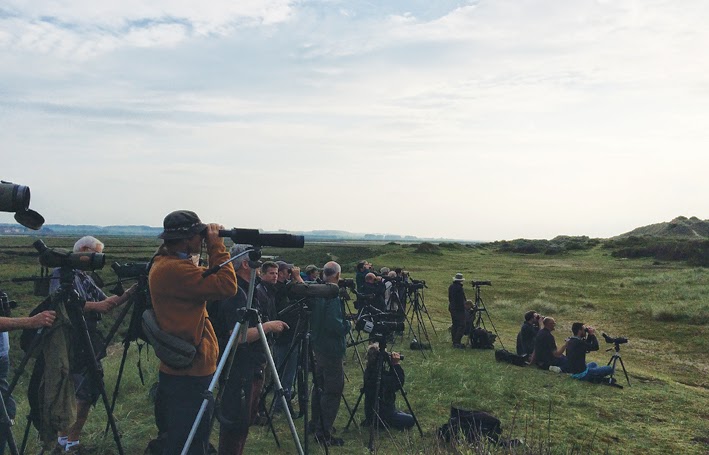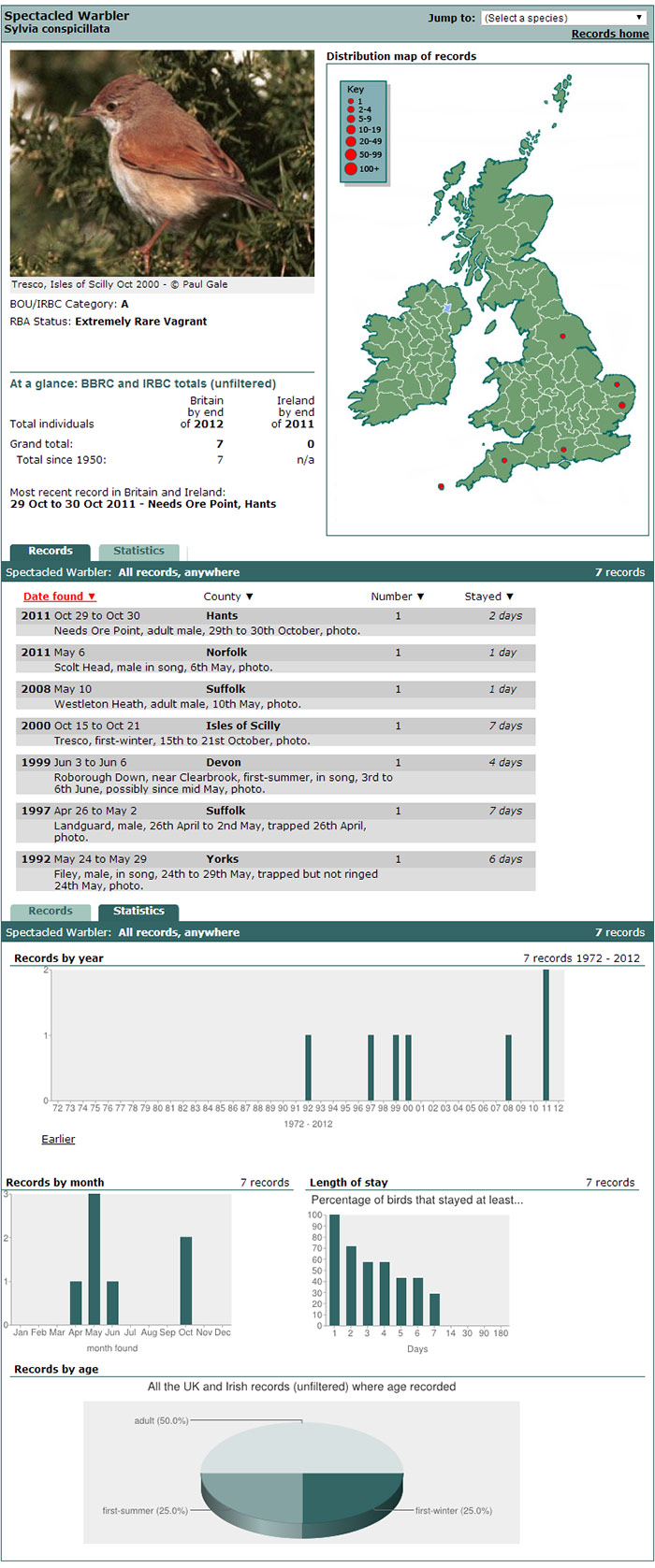Finders in the field: Spectacled Warbler, Burnham Overy, Norfolk 02 Jun 2014
by Neil Alford

Monday June 2nd was a modestly warm day along the north Norfolk coast, with some sun accompanying a gentle south to south-southeasterly wind. I decided to spend another day doing both Gunhill and Overy Dunes, undertaking a similar route to one that I’d birded throughout much of the spring to date.
The first part of the day was rather quiet and having seen only Linnets at Gunhill, I thought that I would make my way across to the west end of Holkham Pines and spend the first part of the afternoon there, hoping that something of interest would perhaps make an appearance on eastern side of this impressive and expansive area of dune habitat.
As I approached the boardwalk, I heard a scratching call from some cover behind me. My first thoughts were of Dartford Warbler but when I approached and got a view of the bird (looking back into the light) making the sound, I realised it was actually a Whitethroat-type.
The bird started to sing and then flew towards the beach. Fortunately I was able to get a view of it against the light where the head colour (the coal-black lores being particularly striking), overall size (a little smaller and more slender in feel to Common Whitethroat), bright orangey-lemon legs and rich rufous wings became obvious. These features, coupled with the song, pointed to just one species. This just had to be a Spectacled Warbler.
Once happy with the identification, I put the news out and, typically, the bird went missing almost immediately. Fortunately I was able to relocate it near the bushes that acted as cover for the first-winter male Siberian Thrush seen at Gunhill back in September 1994 ~ an area many local and visiting birders are familiar with.
The Spectacled Warbler became rather mobile but it occasionally burst into song which helped to locate it in the suaeda and other cover, over an area of some 300 metres or so. The job of keeping track of the warbler become immeasurably more straightforward as the first local birders began to appear on site and, after a sortie back towards the boardwalk during the early afternoon, the bird found its way back to the “Sibe Thrush” area and this is where it continued to sing frequently and show well for almost the rest of the day, until dusk.
Interestingly, during the late afternoon, it was seen to be carrying nesting material for a “cock nest” ~ often a simple construction usually built near a favourite song post or bush ~ in a similar vein to the male Desert Warbler that appeared on Blakeney Point in May 1993, which began to build an intricate construction at The Hood, despite the lack of a female.
The bird was seen from dawn the next day until just after 8am when it flew south across the saltmarsh and over the seawall and was lost to view. Happily though, it was back in its favoured location by the middle of the morning and singing once more.


My first Spectacled Warbler in Britain was the Filey bird of May 1992 (a British first too of course) but I was in Paris when the news broke, which was something of a challenge at the time, but I managed to see it the following day. I also saw Suffolk’s first Spectacled Warbler (and Britain’s second) at Landguard in April 1997, an individual that showed a little better than the bird in North Yorkshire.
This will become the eighth record of the species for Britain and is the first here since 2011, a year which saw two birds appear, both of which were suppressed ~ one was at Needs Ore Point in Hampshire at the end of October while another, Norfolk’s first, another singing male, spent a day on Scolt Head Island on May 6th, a location within just a few hundred metres of this week’s bird (which made the discovery this week so much sweeter for several of the Norfolk listers who arrived early in the proceedings).
I had intended walking from Morston to Wells but changed my mind at the last moment which, in retrospect, was just as well…
Neil Alford
June 2014
Spectacled Warbler in Britain






